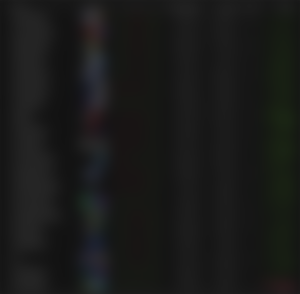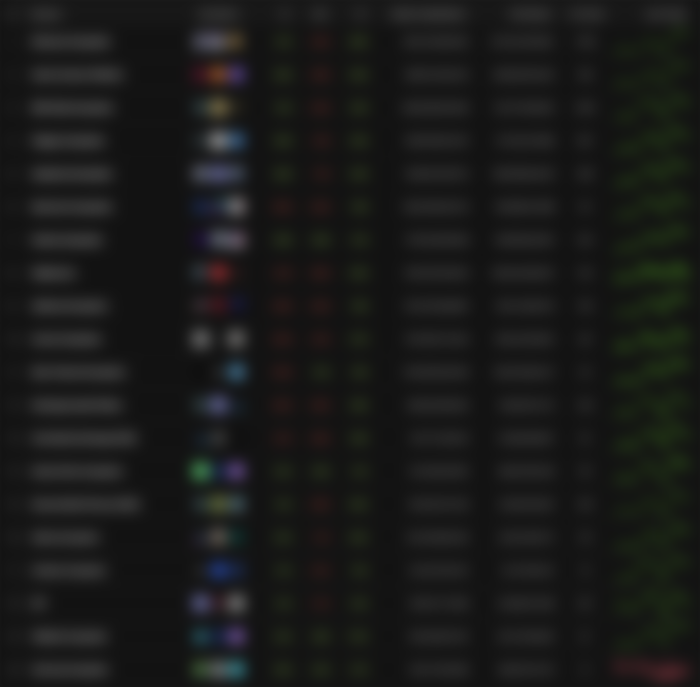A Layer 1 Leverage Trade (Without using leverage): Octopus Network
As Jesse Livermore so eloquently put it in Reminiscences of a Stock Operator:
A man may beat a stock or a group at a certain time, but no man living can beat the stock market! A man may make money out of individual deals in cotton or grain, but no man can beat the cotton market or the grain market. It’s like the track. A man may beat a horse race, but he cannot beat horse racing.
Livermore goes on to say that he wishes there were more words to further emphasize this point as if it was the most important lesson that no one ever truly understands. And that’s the part that always stuck with me. I listened to it over and over because I couldn’t quite grasp this concept.
Now I realize just how important that concept is, because he was constantly battling it inside himself. He lost his fortunes a few times and ended up with a very tragic ending you should research yourself, after you read Reminiscences of a Stock Operator.
We hear gurus and furus tell us to stay away from margin trading every day. It has turned into white noise at this point.
But I don’t think people actually talk about the deeper psychology of our choice lever up.
We think so many people are beating the market and stacking so much spot ETH and BTC through leverage. And that’s what we all want. A ton of spot ETH and BTC.
I’m very guilty too, but it doesn’t matter because the market needs you to feel this way.
The point is to recognize this feeling inside yourself and make better choices based on the fact that:
You can only capture pieces of opportunity within the market.
So I offer to you, ladies and gents, an example of how to research a niche trade, within a niche trade, to increase your updside (and downside) by simply holding a spot position.
But first, a let’s talk about reality, and expectations.
Reality: Crypto offers outsized returns without using margin.
Compared to traditional Stock market gains, many crypto assets produce gains like call options on stocks, but without the time decay or expiration. In crypto, we just have to hold long enough for an up trend. And it’s still not that long in many cases.
Trends offer many opportunities, but they come and go. However, some trends always repeat.
Theoretically, if we’d just bought ETH in March of 2021 on the retest of 2017 highs, and then sold the high in November, we could have made roughly 235% returns in 8 months. That’s fantastic, but it’s not enough compared to our expectations. I get it. I’m the same way.

Very few played that trade to perfection. Selling the top is hard when our greedy hearts dream of orgies on yachts and private jets. 235% doesn’t get us to the yacht life, unless you’re already there. (We’d still be up roughly 33% if we held till today.)
Layer 1 protocols always trend in bull runs. In this last bull run we saw that there is an appetite for layer 1’s other than ETH, offering other fundamentals.
Through this perspective, Solana could theoretically be considered a leveraged trade on ETH, because all Layer 1’s are compared to ETH (hence the term “ETH killer”).
Further, SOL has a smaller market cap than ETH, so SOL stands to return higher gains and higher losses.
…AVAX, LUNA, ATOM, DOT, NEAR…the list goes on for layer 1’s that outperformed ETH during the bull run.
The point of leverage is to make more money with the money we have, but the risks are so much higher. Just ask 3AC, or the average TA trader. If we trade on 20x-100x leverage, our window of success is massively restrained within our liquid capital vs. our stop loss and/or liquidation level.
It’s MUCH harder to consistently make money with these extra components reducing your probabilities. After all, it’s not our money, so why would the market make it easy on us?
The point is to flip the script and frame your probabilities differently.
With research, we can find ways to expose ourselves to high risk/reward plays within layer 1 trends.
So, why would we choose layer 1 trends instead of Defi trends, or Crosschain trends, or (heaven forbid) metaverse trends?
Because Layer 1’s are largely the highest market caps, and they offer us a very clear structural hierarchy.
We know for a fact that Trader Joe is a DEX on AVAX, with a much lower market cap than AVAX, and people will have to use it. Now we can begin our research on how Trader Joe generates revenue and grows its user base.
The same is NOT true for DeFi trends or metaverse trends. What is a metaverse? It’s not really defined yet, we have no standard for hierarchy yet. What makes a DeFi project truly decentralized and safe guarded from vulnerable ponzinomics? There is a ton of scrutiny. It’s murky at best.
So what can we do to fully understand our trade thesis and side step liquidation while still exposing ourselves to outsized returns (and losses)?
Start at the Layer 1 level, and work our way down through essential projects within that ecosystem.
Example: NEAR protocol
NEAR is a Proof of Stake layer 1 solution that supports any language under the WebAssmebly umbrella (Java, Rust, Go, etc.) to give more builders access, and thus, provides a wider net of project visions as the ecosystem expands.
The NEAR ecosystem is currently #11 in terms of market cap compared to other ecosystems on Coingecko:

It’s not small, but it has room to grow. Keep in mind that these are soft estimates, as Coingecko has yet to improve their ecosystem inclusions.
Another way we can look at growth is by looking at Near on Defillama to see if the ecosystem is attracting capital:

It is attracting capital month over month, and I know that there are other projects (like Octopus Network) that are not included in this snapshot of TVL, which tells us that NEAR is healthy.
If we have conviction, we can dive deep into the differentiators of the NEAR ecosystem:
NEAR is EVM compatible through a smart contract called Aurora, which is a ‘sidechain’ native to NEAR. Almost all other Layer 1’s (for now) achieve their EVM label by creating an entirely new blockchain, which creates a more cumbersome integration process for building and scaling.
This makes NEAR’s flavor of EVM compatibility more lean, which means that there are less vulnerabilities in theory.
So…we look at these differentiators and ask ourselves, what makes the overall NEAR vision special?
NEAR wants to empower scaling to more creative projects by making the building process easier.
What are the closest competitors? Polkadot has a very similar vision boasting real world utility outside of financial products.
Now we want to find a project that makes sense, and boosts NEAR’s attractiveness above Polkadot’s for builders.
So we’re looking for something that empowers “scaling more creative projects”.
Example: Octopus Network
OCT is a NEAR native multichain network that offers developers a platform to “customize” their own appchains to accommodate more specific needs around more specific project visions and real world use cases.
Further, OCT is interoperable with Polkadot, Cosmos, Ethereum or any other IBC enabled blockchain to expand the scope of options.
Let’s look at one use case: Healthcare Records. Security is much more important than TPS (transactions per second). So an appchain needs to build on a chain prioritizing security suited for a gazillion health records compliant with HIPAA(esque) regulations globally.
So, Octopus Network opens NEAR up to substrate interoperability to give builders many more customizable options.
Why is this important?
Because it’s easier, faster, and MUCH MUCH MUCH cheaper than DOT to start building towards real world adoption.
But, Polkadot also utilizes substrate to customize protocol priorities. Why is OCT better?
Well, to win the privilege of building on one of Polkadot’s coveted Parachain auction slots, Acala had to fork over 32.5M DOT. This was on Nov. 18th when DOT was roughly $40. That’s roughly $1.3B.
Ummm, that’s a lot.
Obviously Acala is a startup, and can’t pay this out of pocket, so they (and Polkadot and the Web3 Foundation) got very creative to foster multiple fund raising channels.
One of which, was to host a crowdloan for DOT holders to bond (lock) their DOT to Acala in order to pay for the parachain slot. In return, they would receive the ACALA token upon launch at a great price.
Again, this was all leading up to the 2021 market top. DOT hit $55 just before the auction. Who knows the prices people were buying/locking their DOT leading up to the event.
(Who knows if there was some price fudging to allow projects to raise this kind of $$.)
This is just one of the ways they had to raise funds.
Many projects were priced out of the opportunity to build, largely because they weren’t focused on “hype” and clever shilling.
People made a lot of money, but it wasn’t because of the team or vision.
So, why all the fuss over Polkadot Parachains?
Because everyone wants to open the flood gates to new capital, aka: mainstream adoption, aka: real world use cases. Real world use cases have have entirely different needs than financial products, which limits adoption.
So, NEAR teamed up with Octopus Network to offer real world blockchain accommodations through appchain technology.
We also know that NEAR is all about scaling to a wider range of projects and ideas that may or may not be established (well funded) at any given stage of growth. They want to offer great ideas a way to build cheaper.
Appchains rely on OCT stakers (validators and delegators) to provide security while building. This means that the project vision, team, community, tokenomics of any given project incentivizes OCT holders to choose the best project to validate.
There is no auction. A project is supported or not, based on the fundamentals and investor interest.
This checks the box of a very particular buzzword: Organic Growth.
It also frees up project funds for building and hiring, instead of playing the hype game.
So, through the process of aligned visions, we can conclude that the success of NEAR will catapult the success of OCT, which is a much smaller market cap at 30.1M (53.8M FDV) vs. NEAR’s 4.5 B at this time.
OCT hit a high of nearly $8 depending on the chart you use. Now it’s .54c.
If NEAR continues to rise, OCT will most likely rise at a faster pace when money starts flowing into alts again, provided the network keeps adding value towards the NEAR vision and no black swan events set it back.
This my friends, is a leveraged NEAR play, which is already a Layer 1 leveraged play vs. ETH.
I’M NOT SAYING YOU SHOULD BUY OCT, NOR SHOULD YOU TAKE THIS AS FINANCIAL ADVICE.
This is an example of how to expose ourselves to leverage(esque) returns by holding spot.
I own some, but this is a risky play like any other project scaling way too quickly in this brand new landscape.
Downside Risk
Just like in any investment, their are many risks involved:
Roadmap Delays
Contract Exploits
Macro Reversals
Things didn’t work out like they thought
It’s not worth the risk if we can’t afford to lose the money.
One more recap, if it wasn’t clear before:
The whole point of this article was to simply illustrate how an investor can expose themselves to higher risk/reward without the danger of liquidation.
Leverage is essentially trading with money we don’t have. The upside seems feasible, but the market wants our liquidity.
At the end of the day, it’s all about preserving our capital and finding safer ways to catch trends.
Hope you have a great day.
ABL (Always be learning)
Original Content, Copywright© ProofofBeans 2022. Original version published on Medium
Cover Image: Octopus Network Accelerator Winter 2021 Batch article by Woori Chen
Resources:
Find me elsewhere for other musings!
Medium | Read.cash | Noise.cash | Publish0x
Disclaimer: Some URLs may include affiliate links. They don’t cost you anything or change anything about your experience on these sites or anywhere else. I’m saying this because I’m always hesitant to click on links. I am not the enemy, I hope that’s apparent. I’ll receive some pennies for your act of kindness.


